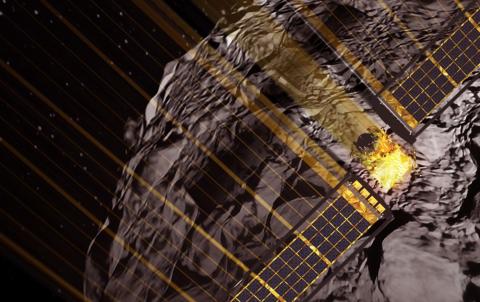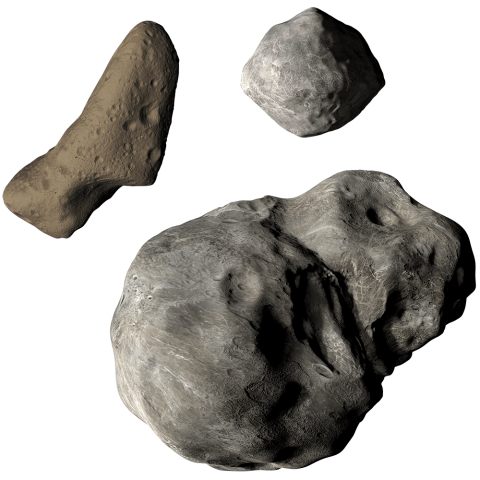About the Instrument
Instrument Type
Optical
The Didymos Reconnaissance and Asteroid Camera for Optical navigation (DRACO) is the lone instrument on the Double Asteroid Redirection Test (DART), which will perform a kinetic impactor demonstration by intercepting and striking an asteroid to cause a deflection of its orbit. DRACO is the sensor that enables the intercept. A high-resolution camera derived from the New Horizons Long Range Reconnaissance Imager, DRACO’s main jobs are to support spacecraft navigation and targeting toward the Didymos asteroid system; to measure the size and shape of the target asteroid, Didymos’ small moon, Dimorphos; and to provide detailed views of the site where DART will slam into Dimorphos at 4 miles (7 kilometers) per second.

DRACO uses an 8.2-inch (20.8-centimeter) aperture telescope and a CMOS (complementary metal–oxide–semiconductor) imaging sensor. It will begin to image the Didymos system about 30 days before DART hits Dimorphos. In the terminal phase, DRACO images are processed autonomously on the spacecraft to determine course corrections to make an intercept. The final DRACO images sent back to Earth will provide important constraints for modeling and interpreting the results of DART’s hypervelocity impact.
Mission
DART
Related News & Stories
Go inside APL’s space missions and research, and check out the latest news, features and discoveries from the teams that are probing mysteries from the Sun to the edge of the solar system and beyond.





